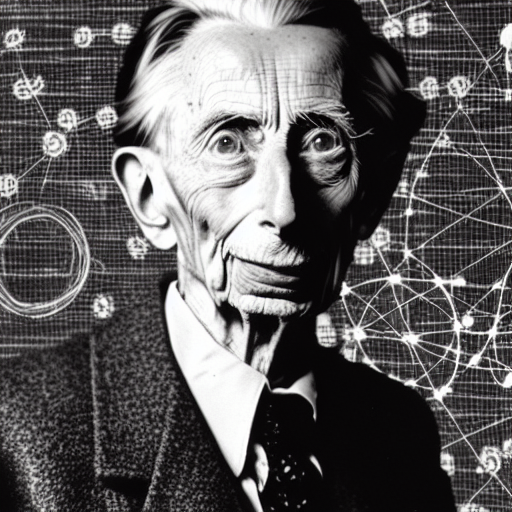Logical Atomism

Bertrand Russel and Atomism by Stable Diffusion
No Internal Structure
In contrast to objects and property graphs, the conceptual model is different for logical atomism: entities (and atoms in general) are considered to have no internal structure. No internal attributes or fields.
But What About Attributes?
Attributes or fields are also connected by relations. This is a much more granular form of representing information. Attributes / Fields can themselves be attached in two forms:
- Attribute Entities: you can think of this as a persisted stream. Different values are assigned at different times. It only makes sense to ask about a value in the context of a specific time. The most recent preceding value which was assigned (in the reference frame / clock of the transactor) is considered to be the value at that time.
- Values: Values have no inherent concept of time and do not change over time. Assigning attributes as fields is conceptually similar to marking struct fields "const" or non-mutating: it expresses the intent that this field in this context can never change.
GraphQL & Logical Atomism
GraphQL's data model can also be seen as logical atomism.
- Attribute Entities / Values: correspond to [scalar types](### #)
- Entities: correspond to GraphQL objects
The Relational Model & Logical Atomism
Facts
Relations between entities. Aka semantic triples in RDF or datalog.
In Zef we use plain Python data types to represent them:
(france, RT.CapitalCity, paris)
france and paris are one of the Zef reference types here.
Facts in Dictionaries
movie1 = {
'title': 'Pulp Fiction',
'year_of_release': 1994,
}
Entities ("objects") typically correspond to dictionaries (aka maps) in plain data structures. Their type may be implicit to the context or specified as as an additional internal key-value pair.
Each key-value pair can be seen as a fact in the context of the dictionary / object in which it appears. For example, the fact "movie1 was released in 1994" corresponds to the second key-value pair and can also be expressed as a triple (movie1, RT.YearOfRelease, 1994). This would correspond to a single relation instance on a graph
Facts in Objects
Very similar principles to dictionaries apply: the field names map to relations and field values to the target nodes. The field values could be of scalar type or other objects.
Facts in Tables
Very similar principles to dictionaries apply: the field names map to relations and field values to the target nodes. The field values could be of scalar type or other objects.
Actor Table
| first name | last name | favorite food |
|---|---|---|
| John | Travolta | 🍕 |
| Samuel | Jackson | 🍔 |
| Uma | Thurman | 🥦 |
!450
Each relation instance can be seen as a fact. Multiple facts can relate to the same entity, leading to the graph-relational model of information.
This graph structure is to be understood on the conceptual level (i.e. not the concrete representation in a graph DB). The same visual representation can be used for data stored in a relational database or a Pandas dataframe.
For more details see ZefDoc - Graph Relational Model.
History
Logical atomism was developed by Bertrand Russel and Ludwig Wittgenstein. It is one of the foundational parts of the Tractatus Logico-Philosophicus.
Some of the core ideas are well summarized by the Plato Encyclopedia
The core tenets of Wittgenstein’s logical atomism may be stated as follows:
- Every proposition has a unique final analysis which reveals it to be a truth-function of elementary propositions (Tractatus 3.25, 4.221, 4.51, 5);
- These elementary propositions assert the existence of atomic states of affairs (3.25, 4.21);
- Elementary Propositions are mutually independent — each one can be true or false independently of the truth or falsity of the others (4.211, 5.134);
- Elementary propositions are immediate combinations of semantically simple symbols or “names” (4.221);
- Names refer to items wholly devoid of complexity, so-called “objects” (2.02 & 3.22);
- Atomic states of affairs are combinations of these objects (2.01).